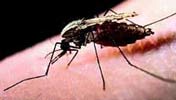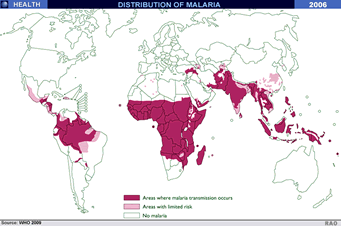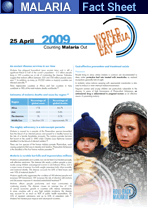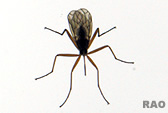 |
Health |
|
|
 |
| Malaria
makes a come back |
 |
| Malaria
is a general term, which includes groups of diseases caused by a parasite
called plasmodium, which has several species. The disease was described
by Hippocrates, the father of medicine in the fifth century BC. It is a
highly communicable disease and the word malaria is derived from mala-azia,
which means bad air, as initially it was supposed to be transmitted rapidly
by bad air. |
|
It
is estimated that around 100 million clinical cases occur each year and
the actual number of persons infected is about 250 million. Many undiagnosed
and sub-clinical cases may be the persistent sources of transmission to
others.
 |
|
Around the world 54 percent of the population lives in the areas where
malaria exists. It is the most important public health problem in the tropical
and sub tropical regions in summer seasons. In context of Nepal, it is
very much prevalent in the Terai region. In each person with high-grade
fever, malaria should be suspected if he / she is from Terai. The disease
exists in areas less than 2000 m from the sea level.
|
|
| Transmission |
 |
 |
| It
is transmitted to man by certain species of infected female Anopheles mosquitoes.
Male mosquitoes can't transmit it. When the parasite is injected into the
bloodstream by a mosquito bite it first invades liver and later the red
blood cells, destroying them. |
|
After
several steps of division and mutation it becomes infectious to others
on 4 to 12 days of infection. Uncommon modes of transmission are via blood
transfusion and from infected mother to newborn child. It is a disease
of the poor, prevalent in developing countries including India and Nepal.
Ill- ventilated and ill-lighted houses provide ideal indoor nesting place
for mosquitoes. The anopheles mosquitoes lay eggs in stagnant water and
thus clogging of water and poor drainage, as is commonly found in developing
countries, provide favorable environment for mosquitoes. Pits, garden pools,
irrigation canals, and engineering projects have led to the breeding of
mosquitoes and an increase in the incidence of malaria.
| What
to do? |
 |
|
|
| When
one is infected with malaria parasite, he or she may develop high-grade
fever in ten to twenty days. Fever may be present daily, in alternate days
or after every two days. It is usually associated with chills or rigours.
There
may be jaundice or severe weakness. Spleen and liver may get enlarged.
Falciparum species of malaria can affect brain also leading to headache,
irrelevant talking, convulsions and other neurological problems leading
sometimes to coma. Some patients may pass very dark colour of urine. |
|
 |
 |
When
one has symptoms like these, he/ she has to visit doctor and examination
of blood confirms diagnosis. As many anti-malarial drugs have developed
resistance, treatment should be well supervised. Considering the morbidity
and mortality due to malaria and its widespread prevalence, the prevention
programs are far more important. Initially DDT was used to control mosquitoes
but after initial spectacular success, the program began to lose momentum
due to resistance to DDT and other technical problems.
There
are many simple measures to be applied by the individual, which includes
use of repellents like odomas, protective clothing, bed nets and screening
of houses. |
Destruction
of adult mosquitoes by using domestic space sprays like Baygon before going
to bed is another alternative. Peridomestic sanitation and intermittent
drying of water container helps to minimize mosquito larvae. Filling of
pits, small-scale drainage and other forms of water management reduce source
for mosquitoes. As the disease is rapidly communicable through mosquitoes,
early diagnosis and treatment should be the rule.
top
| Information-Documents |
 |
| Malaria
Info |
Malaria
Info |
Malaria
Info |
 |
|
 |
| Links |
 |
 |
 |
Externe Links |
|










